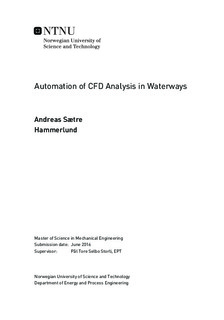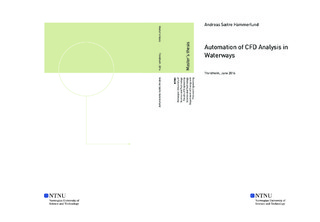| dc.description.abstract | The objective of this Master s work have been to develop robust numerical methods for an online, automated application for Computational Fluid Dynamics (CFD) analyses of details in the hydropower waterways. This has involved thoroughly testing of several approaches regarding mesh generation, implementation of rough surfaces and sediment transport, as well as alternatives to inlet boundary conditions. The analyses have shown that it should be possible to obtain representative results in order to get a conceptual understanding of the flow in the different component of hydropower waterways.
The mesh resolution studies aim was to find a rule of thumb regarding an acceptable mesh resolution. Several geometries was analysed, and a starting point with regards to mesh resolution was given by the ratio hydraulic diameter / body size of mesh element . However, as the geometries studied with the automatic CFD application may vary in complexity, it is recommended to implement a mesh dependence test in the automated CFD application. A validation of the method regarding mesh resolution was performed of the sand trap in Tonstad Hydropower station. The velocity profiles at three locations in the sand trap compared well with the results of field measurements.
In the roughness studies it was confirmed that the built in rough wall models in ANSYS CFX was not applicable for the large scale roughness in blasted hydropower waterways. Simulations of geometries with physical roughness elements provides acceptable results for pressure loss compared to hand calculations based on empirical formulas. However, due to mesh requirements, the computational cost is not within the limits of an automated CFD application. A cost efficient method regarding mesh deformation in order to create a rough surfaced domain, showed promising results. However, this method will need some modifications in order to be robust and applicable in automated applications.
Implementation of sediment transport by Eulerian-Lagrangian particle tracking seem to give acceptable results when modelling particles suspended in the flow, but the model fails to capture the resuspension of particles that has been in contact with the bottom. However, in combination with the velocity and shear stress data from the regular automated CFD analyses, it is possible to obtain a good understanding of the particle transport capability of the flow. | |

